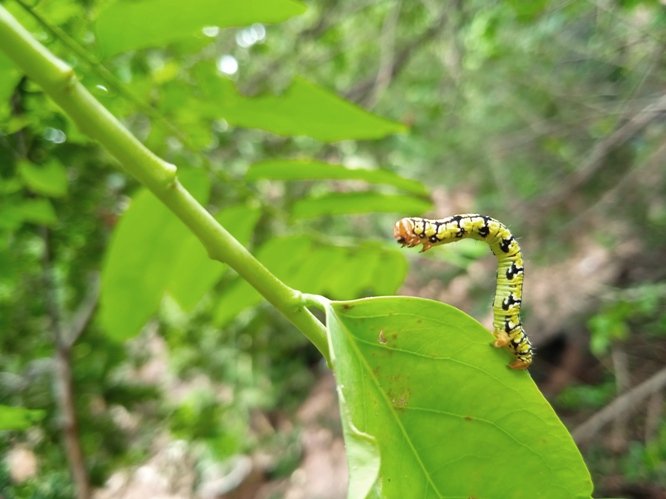
Greetings today Wednesday July 19, 2023, friends of the Insects Of The World community; I wish you lots of health and prosperity this week. As usual, today I bring you some photos of certain inhabitants of my backyard, which in this case are not to my liking, but it is all part of the life cycle. These are the larvae or worms of the white-tipped black moth (Melanchroia chephise), a species that voraciously preys on certain plants, and in this case they feast on the leaves of my four star cherry bushes (Phyllanthus acidus).

It is not the first time that this pest has visited my trees. For about 8 years it has been presented annually, sometimes very aggressively, other times softer. The first time I saw these worms on my star cherry bushes, it was unbearable: they literally ate the entire largest star cherry tree, not a single living leaf or branch remained, they even ate the bark of the tree. Fortunately, this species of plant is very resistant, and after a month my beautiful tree sprouted. Such voracious attacks have not been repeated, but this year it seems that it will be very strong.
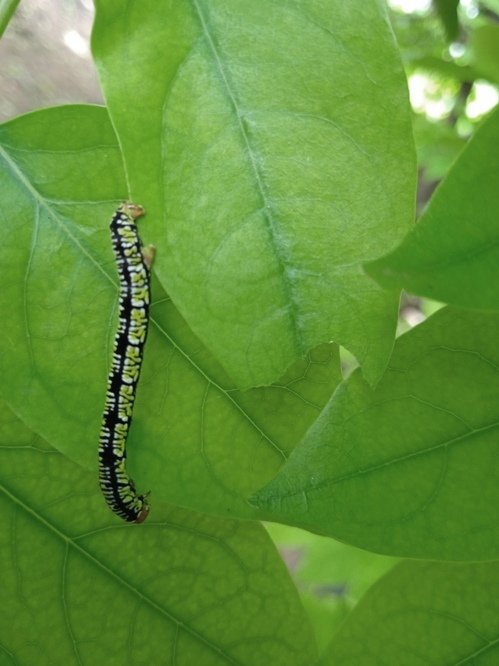
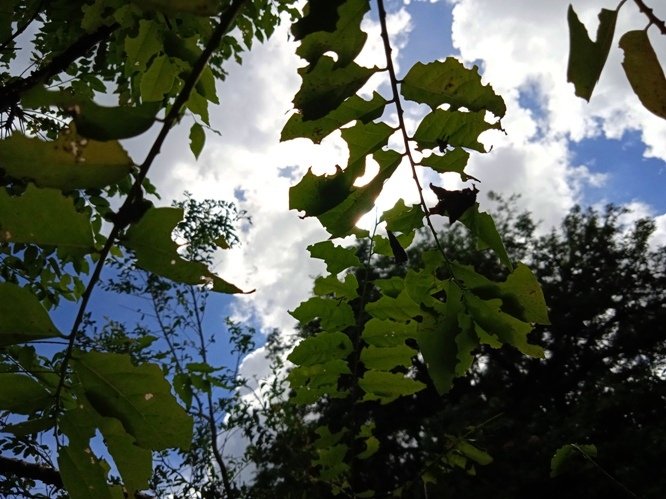


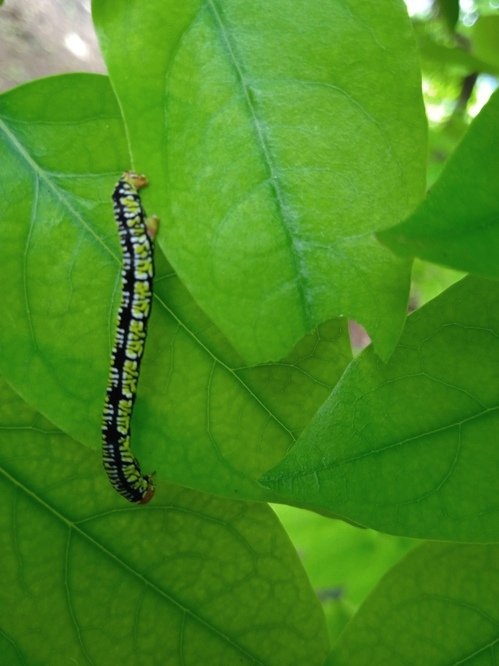
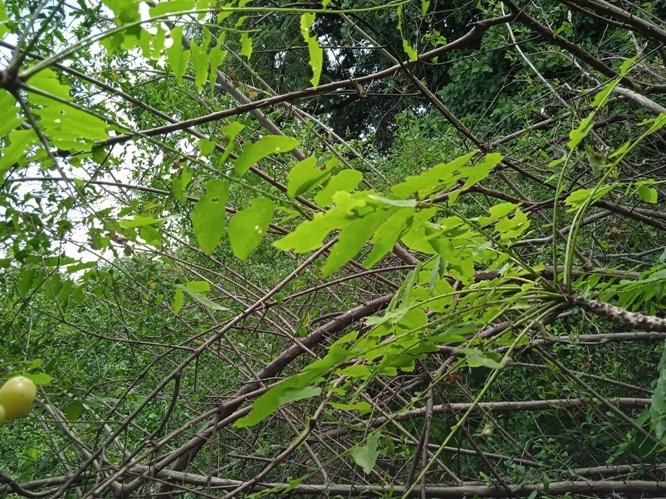

Este insecto habita en el continente americano, y se distribuye desde Arizona hasta el sur de Paraguay.
El tamaño de su larva oscila entre los 2,5 y 4 centímetros.
El tamaño del insecto adulto es de aproximadamente 3 centímetros (extensión de sus alas).
El ciclo de duración del gusano es de 7 días, con hábitos diurnos.
Tiene un apetito voraz, por lo que puede destruir fácilmente cualquier planta (ya les comenté lo que le pasó a árbol de cereza estrellada, el primer año que recibió la visita de esta plaga).
El gusano es muy vistoso, con un color verde intenso, con franjas negras y amarillas, y ciertas áreas color naranja.
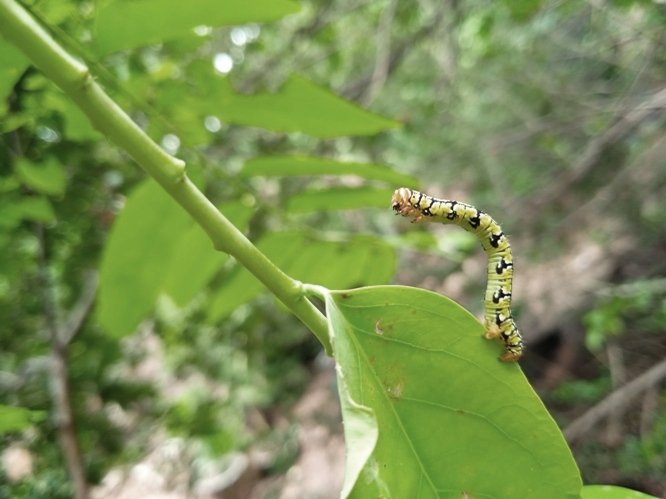
This insect inhabits the American continent, and is distributed from Arizona to southern Paraguay.
The size of its caterpillar ranges between 2.5 and 4 centimeters.
The size of the adult insect is approximately 3 centimeters (extension of its wings).
The duration cycle of the caterpillar is 7 days, with diurnal habits.
It has a voracious appetite, so it can easily destroy any plant (I already told you what happened to a star cherry tree, the first year it was visited by this pest).
The caterpillar is very visible, with a deep green color, with black and yellow stripes, and certain areas of orange color.

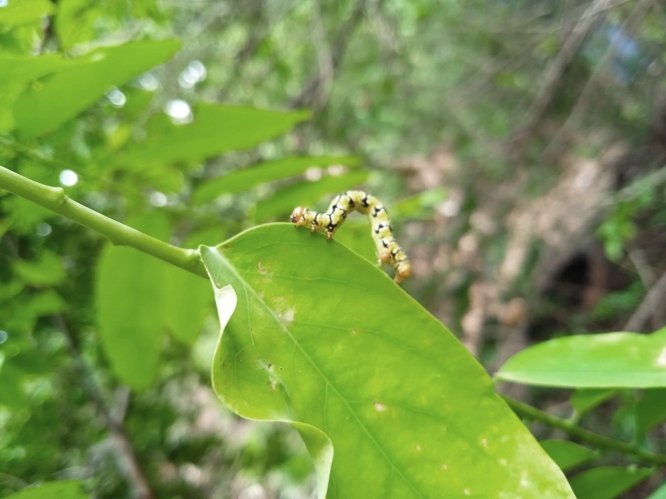
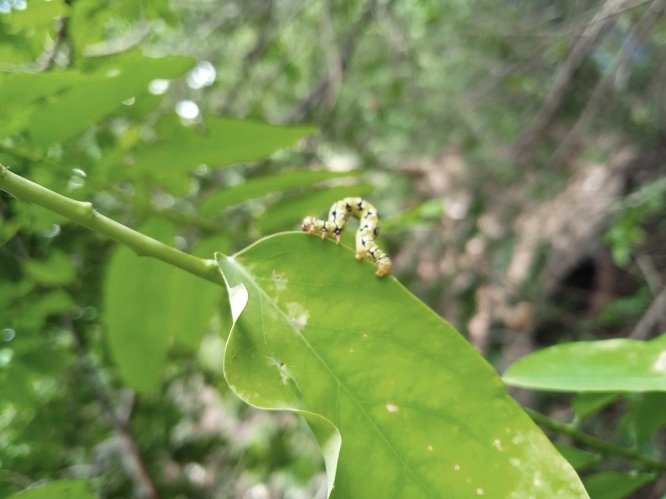

Something that caught my attention is that this caterpillar expels a kind of fiber or thread, with which it falls from the tree and falls to the ground. I thought it was to bury itself in the soft ground and become a pupa, however I have not been able to find evidence of this, nor have I found literature that talks about it.
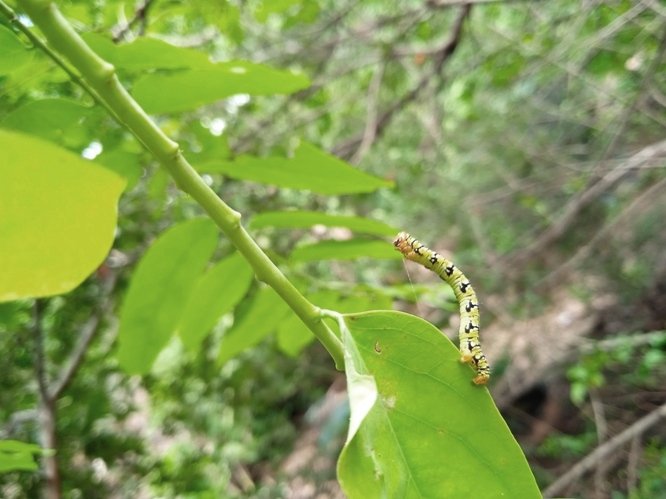
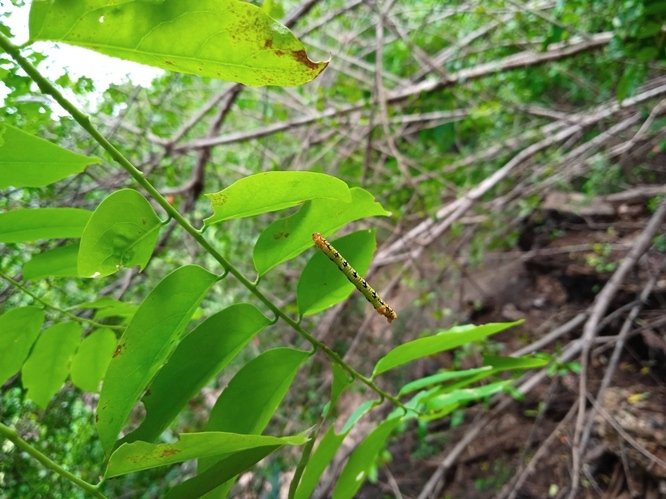
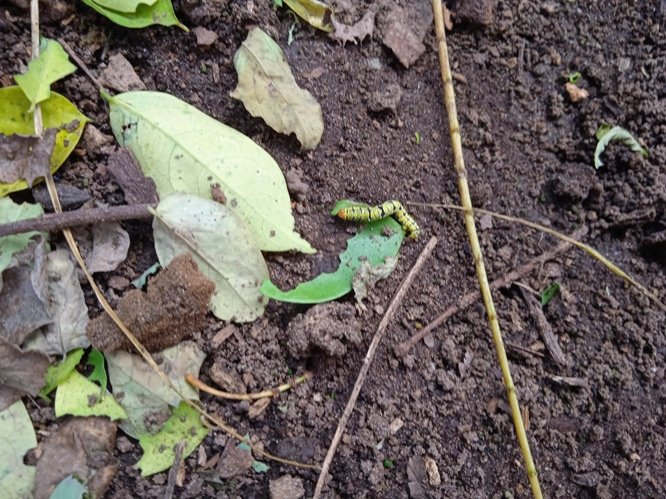
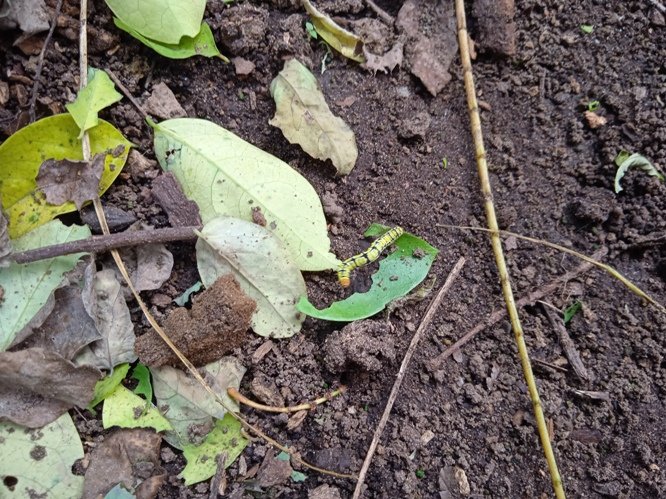

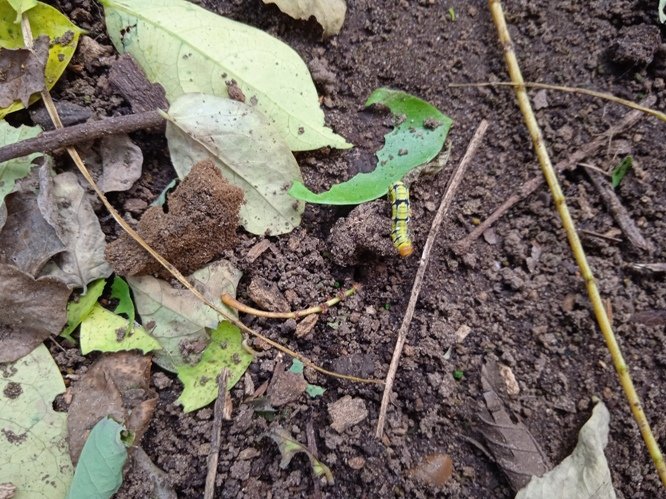

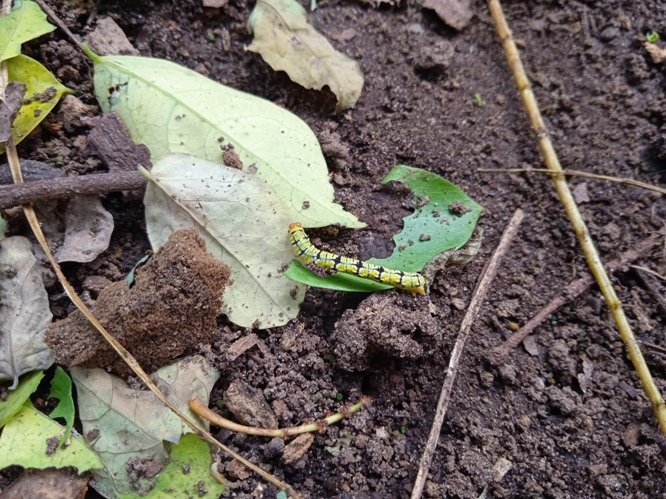
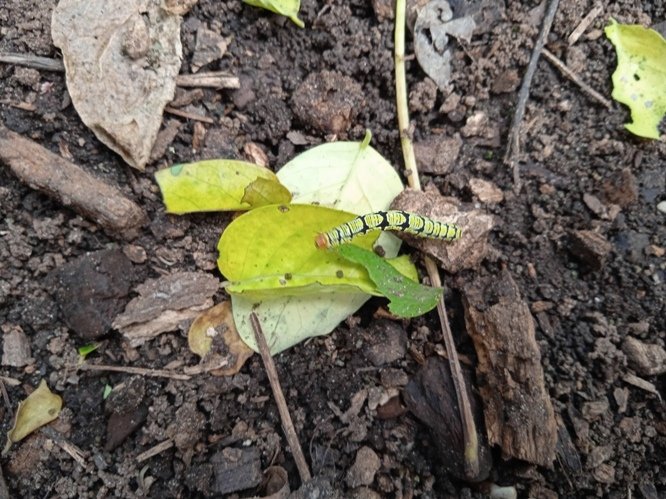


Here I end my post today, in which I wanted to talk about this colorful but harmful insect, the caterpillar of the White-tipped Black Moth (Melanchroia chephise). Greetings to all, and remember that insects (even those that are pests) are very important for life on our planet.

Aquí pueden ver a la polilla negra de puntas blancas en estado adulto (ver el último par de fotos)
Here you can see the adult white-tipped black moth (see the last couple of photos)

Todas las fotos de este post son de mi autoría y fueron tomadas con mi teléfono Xiomi REDMI 8 A // These photos are my own, and were taken with a Xiomi REDMI 8 A phone
Los divisores son cortesía de @eve66 quien comparte bellos diseños que embellecen el maquetado de nuestras publicaciones. // The dividers used are courtesy of @eve66 who shares beautiful designs that embellish the layout of our post.
En caso de que se requiera utilizar el contenido o las imágenes de este post y de mis otras publicaciones, agradecería que se hiciera referencia a mi autoría (Fabiola Martínez) y se citara el enlace correspondiente. Gracias. // In case it is required to use the content or images of this post and of my other publications, I would appreciate if you could refer to my authorship (Fabiola Martínez) and cite the corresponding link. Thanks.






You caught great moments of the caterpillar moving across the leaf! :)
!PIZZA
Ohhh, thanks @life-shturm
I was able to capture these shots yesterday afternoon. There are many caterpillars, both on the trees and on the ground.
Greetings!
$PIZZA slices delivered:
(5/5) @life-shturm tipped @sirenahippie